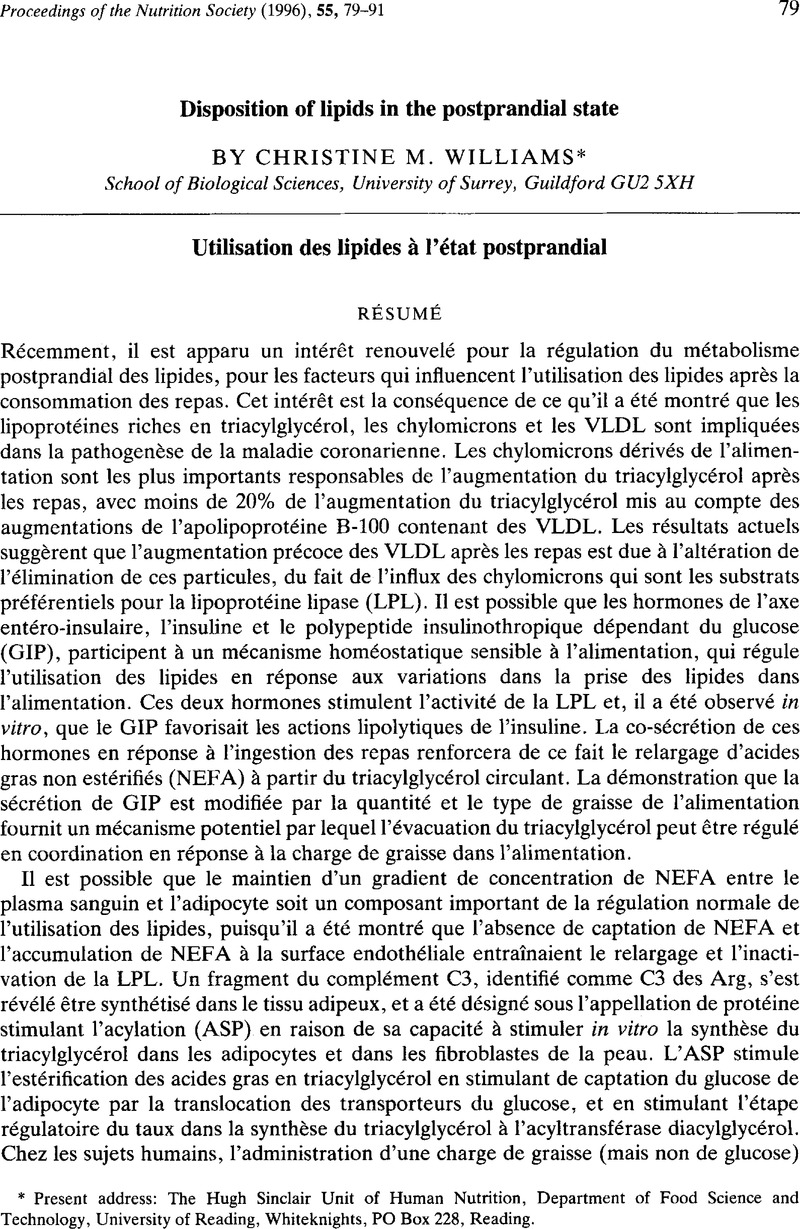Crossref Citations
This article has been cited by the following publications. This list is generated based on data provided by Crossref.
Hugi, D.
Gut, S. H.
and
Blum, J. W.
1997.
Blood Metabolites and Hormones—Especially Glucose and Insulin—in Veal Calves: Effects of Age and Nutrition.
Journal of Veterinary Medicine Series A,
Vol. 44,
Issue. 1-10,
p.
407.
Herd, Sara L.
Hardman, Adrianne E.
Boobis, Leslie H.
and
Cairns, Caroline J.
1998.
The effect of 13 weeks of running training followed by 9 d of detraining on postprandial lipaemia.
British Journal of Nutrition,
Vol. 80,
Issue. 1,
p.
57.
Minihane, AM
Khan, S
Talmud, PJ
Williams, DL
Wright, JW
Murphy, MC
Griffin, BA
and
Williams, CM
2000.
Lack of association between lipaemia and central adiposity in subjects with an atherogenic lipoprotein phenotype (ALP).
International Journal of Obesity,
Vol. 24,
Issue. 9,
p.
1097.
Ikeda, Ikuo
Kumamaru, Jun
Nakatani, Noriaki
Sakono, Masanobu
Murota, Itsuki
and
Imaizumi, Katsumi
2001.
Reduced Hepatic Triglyceride Secretion in Rats Fed Docosahexaenoic Acid–Rich Fish Oil Suppresses Postprandial Hypertriglyceridemia.
The Journal of Nutrition,
Vol. 131,
Issue. 4,
p.
1159.
Kim, Hye-Kyeong
Choi, Sung-Won
Lee, Hae-Jeung
Lee, Joo-Hee
and
Choi, Hay-Mie
2003.
Suppression of Fatty Acid Synthase by Dietary Polyunsaturated Fatty Acids is Mediated by Fat itself, not by Peroxidative Mechanism.
BMB Reports ,
Vol. 36,
Issue. 3,
p.
258.
Kristensen, Janni Brogaard
Jørgensen, Henry
and
Mu, Huiling
2006.
Diacylglycerol Oil Does Not Affect Portal Vein Transport of Nonesterified Fatty Acids but Decreases the Postprandial Plasma Lipid Response in Catheterized Pigs.
The Journal of Nutrition,
Vol. 136,
Issue. 7,
p.
1800.
Lairon, D
Lopez-Miranda, J
and
Williams, C
2007.
Methodology for studying postprandial lipid metabolism.
European Journal of Clinical Nutrition,
Vol. 61,
Issue. 10,
p.
1145.
Ikeda, Ikuo
2009.
Physiological Functions of Various Food Components that Prevent Atherosclerosis.
Nippon Eiyo Shokuryo Gakkaishi,
Vol. 62,
Issue. 3,
p.
99.



